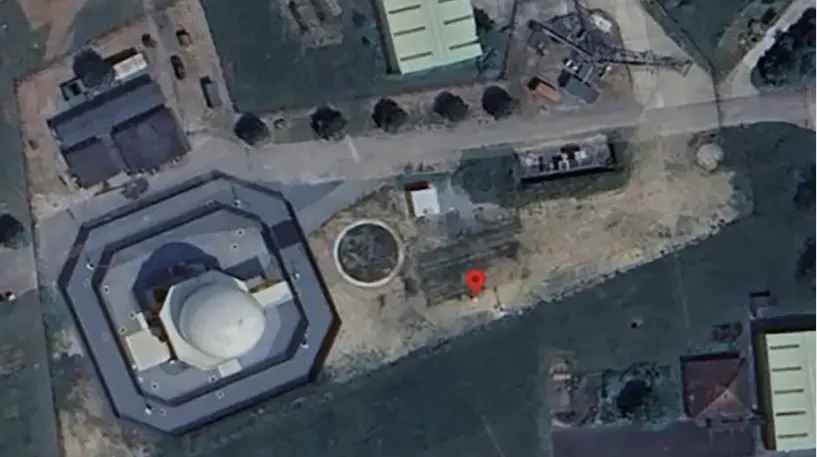
From THE DAILY SKEPTIC
by Chris Morrison
In March 2024 the Daily Sceptic shocked the science and political world by disclosing that nearly 80% of the UK Met Office’s temperature measuring sites were so poorly located that potential ‘uncertainties’ could corrupt the readings by a numbers of degrees of centigrade. World Meteorological Organisation (WMO) Classes 4 and 5 in its CIMO scale come with ‘uncertainties’ up to 2°C and 5°C respectively, and a Freedom of Information (FOI) request found that 77.9% of its sites were in these two ‘junk’ categories. It should have been a wake-up call demanding immediate improvement of the nationwide network, not least because the Met Office frequently catastrophises its temperature figures in the interest of promoting the Net Zero fantasy. Alas, no. A new FOI has found that the Classes 4 and 5 junk sites have increased significantly over the last 18 months and now total an appalling 80.6% of the entire network. Pristine Class 1 sites – which measure a credible ambient air temperature with little chance of unnatural heat corruption – are just 4.9% of the total, having fallen in number in this short period from 24 to 19.
Hundreds of millions of pounds have flowed through this Government department over the last 18 months but little effort seems to have been made to improve its basic and important meteorological measuring function. What is worse is that the Met Office doesn’t seem to understand the scale of the problem. Over the 18 months, it appears that 20 new sites have been opened in its now 387-strong network. Seventeen of these have been given WMO classifications, of which a frankly ludicrous 64.7% are starting life in the Class 4/5 junk lane.
The WMO rates weather stations by the degree of possible temperature corruption caused by nearby unnatural or natural influences. Classes 1 and 2 are considered what we might call pristine, with no significant errors arising from artificial influences. The latest figures show that the Met Office has just 12.1% of its sites in these two unadulterated categories. Class 3 comes with an uncertainty of up to 1°C and accounts for 7.23% of the total. The real shocker is Class 4 where the percentage of the total has risen from 48.7% to over half at 50.1%. Class 5 has no defining conditions and could be located next to a blast furnace door. It has risen over the last 18 months from 29.2% to 30.5%. The WMO states that a Class 1 location can be considered a “reference site”. A Class 5 site is said to be a location “where nearby obstacles create an inappropriate environment for a meteorological measurement that is intended to be representative of a wide area”.
Despite this, Class 5 ‘extremes’, often caused by temporary but obvious heat spikes, litter the Met Office databases and record books. Of course such Class 5 data, unsuitable for providing an accurate temperature for a “wide area”, are loaded into databases producing ‘hottest evah’ days, months, seasons and years. Their final destinations are the global datasets that exaggerate recent warming, again to promote Net Zero. Sprinkling the Class 4 and 5 fairy dust over the figures adds a bit more of the urgency required for elite political purposes.
Below are the latest WMO Class figures at the Met Office shown in block graph form.
On the scandalous locating of new sites straight into the junk dump, regretfully the Met Office has considerable past form. Other FOI disclosures from last year have revealed that over 80% of the 113 stations opened in the last 30 years were in Classes 4 and 5. Worse, 81% of stations started in the last 10 years are junk, as are eight of the 13 new sites in the last five years. The latest batch opening is hardly an improvement on this track record.
The Met Office frequently hides behind the ridiculous excuse that it has few pristine sites because the British Isles are a crowded place with few suitable open spaces. One of the latest Class 4 openings is at Dundreggan Rewilding Centre. Although a Scottish tourist destination with café and facilities, it might be thought that a suitable uncorrupted spot among large areas of scrub on the 10,000 acre site could be found. Likewise Skye: Harlosh, a Class 4 site on a Scottish island not known for heavy urban development.
The photograph above shows the new Class 4 Neatishead station located near a newly-built doomed radar station. In fact it is given a ‘4S’ rating due to the effects of shading from the large military building. The temperature station is circled to the right and is near all types of heat influences including a road and other built structures.
Citizen sleuth Ray Sanders has already reviewed this site, asking the obvious question why a new weather station would be sited in such a meteorological compromised location from inception. There are plenty of open areas nearby, but if close proximity to the radar dome is needed, the data should be used solely for the purpose they were originally intended. Sanders observes that there are already several other Met Office sites in the area. In early May, Sanders noticed that Neatishead recorded a national daily high temperature, and he was prompted to ask the Met Office enquiry desk for the site’s WMO CIMO rating. He received the following reply:
Whilst we look up what the CIMO rating the site is, we will need to know why you are enquiring and what you are doing with the information?
The climate is breaking down, Net Zero is the only solution. We are just not going to tell you how we know, seems to sum up the Met Office’s attitude.
Chris Morrison is the Daily Sceptic’s Environment Editor. Follow him on X.



